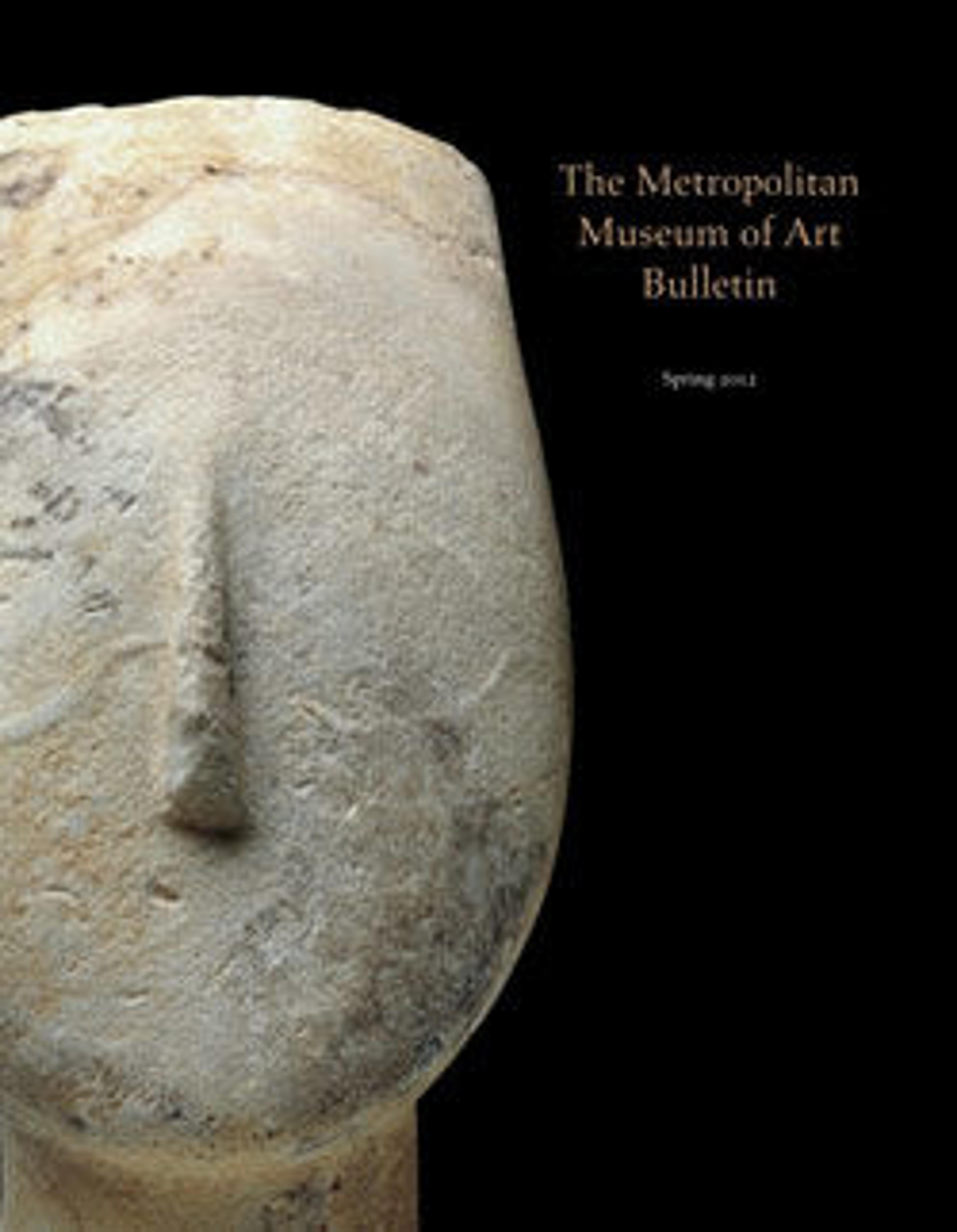Terracotta female figure
Mycenaean statuettes of this type are named for their resemblance to the shape of the Greek letter phi (φ). Although highly schematic, phi figures are identified as female by the presence of long dresses and clearly defined breasts. Examples have been discovered in funerary, religious, and domestic contexts. Their symbolism is not clear, and their use probably varied according to circumstance.
This example has a circular body completely covered with painted wavy lines, perhaps indicating folds of drapery. Breasts are indicated, although the arms are little more than bulges hanging down at the sides. Her face is pinched, with eyes applied as separate slips of clay.
This example has a circular body completely covered with painted wavy lines, perhaps indicating folds of drapery. Breasts are indicated, although the arms are little more than bulges hanging down at the sides. Her face is pinched, with eyes applied as separate slips of clay.
Artwork Details
- Title: Terracotta female figure
- Period: Late Helladic IIIA
- Date: ca. 1400–1300 BCE
- Culture: Helladic, Mycenaean
- Medium: Terracotta
- Dimensions: H.: 4 1/8 in. (10.5 cm)
- Classification: Terracottas
- Credit Line: Fletcher Fund, 1935
- Object Number: 35.11.18
- Curatorial Department: Greek and Roman Art
More Artwork
Research Resources
The Met provides unparalleled resources for research and welcomes an international community of students and scholars. The Met's Open Access API is where creators and researchers can connect to the The Met collection. Open Access data and public domain images are available for unrestricted commercial and noncommercial use without permission or fee.
To request images under copyright and other restrictions, please use this Image Request form.
Feedback
We continue to research and examine historical and cultural context for objects in The Met collection. If you have comments or questions about this object record, please contact us using the form below. The Museum looks forward to receiving your comments.
